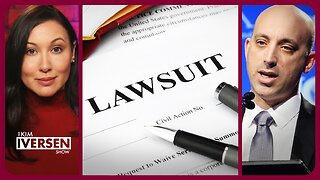Premium Only Content

Lubricants and Oils
**Lubricants and oils** are substances used to reduce friction between surfaces in motion, protect against wear and tear, and improve the efficiency and longevity of machinery. They are essential in almost every mechanical system, from engines and gears to industrial machines. Here’s an overview of lubricants and oils:
---
### **1. Purpose of Lubricants and Oils**
- **Reduce Friction:** Lubricants form a thin film between moving surfaces, minimizing direct contact and reducing friction.
- **Prevent Wear and Tear:** By reducing friction, lubricants prevent the surfaces from grinding against each other, reducing mechanical wear.
- **Heat Dissipation:** Lubricants help dissipate heat generated by friction and prevent overheating.
- **Corrosion Protection:** Oils and lubricants form a protective barrier that prevents rust and corrosion from forming on metal surfaces.
- **Cleanliness:** Lubricants help clean the surfaces by carrying away dirt, debris, and particles from machinery.
- **Sealing:** Some lubricants create seals that prevent the ingress of contaminants.
---
### **2. Types of Lubricants**
Lubricants can be classified based on their composition and the type of application:
#### **A. Oils**
Oils are the most common type of lubricant and are typically used in engines, transmissions, and other machinery.
- **Mineral Oil:** Derived from petroleum, mineral oils are commonly used in automotive engines and machinery. They are inexpensive and have decent lubricating properties.
- **Synthetic Oil:** Chemically engineered oils, often used in high-performance engines or extreme conditions. Synthetic oils offer superior thermal stability, wear protection, and extended service life.
- **Semi-Synthetic Oil:** A blend of mineral and synthetic oils, offering a compromise between cost and performance.
- **Vegetable Oil:** Bio-based oils made from plants, often used in food processing or environmentally friendly applications.
#### **B. Grease**
- **Composition:** Grease is essentially oil mixed with a thickener (like lithium, calcium, or aluminum soap) to form a semi-solid. It stays in place longer than liquid oils and is used in applications where a liquid lubricant would be less effective.
- **Applications:** Bearings, hinges, gears, and any parts where oil might not stay in place due to gravity or high speeds.
#### **C. Solid Lubricants**
- **Types:** Graphite, molybdenum disulfide, and other dry powders or pastes that provide lubrication without the need for oil.
- **Applications:** Used in high-temperature or vacuum environments where liquids cannot function effectively.
#### **D. Semi-Liquid Lubricants**
- **Examples:** Used in systems like automatic transmissions, where the lubricant needs to be thicker than oil but not as solid as grease.
---
### **3. Lubricant Properties**
When selecting a lubricant, it’s important to consider the following properties:
1. **Viscosity:** The measure of a lubricant’s resistance to flow. The correct viscosity ensures proper film strength between surfaces.
- **Viscosity Index (VI):** Indicates how much the viscosity of a lubricant changes with temperature. Higher VI means less variation with temperature.
2. **Flash Point:** The temperature at which the lubricant vapors can ignite. A higher flash point is desired for high-temperature applications.
3. **Pour Point:** The lowest temperature at which the lubricant remains fluid. Lubricants with a low pour point are important for cold environments.
4. **Additives:** Chemical compounds added to base oils to enhance performance, such as:
- **Antioxidants:** Prevent degradation of oil at high temperatures.
- **Anti-Wear Additives:** Protect metal surfaces from wear.
- **Corrosion Inhibitors:** Prevent rust and corrosion.
- **Detergents and Dispersants:** Keep contaminants suspended and prevent sludge formation.
5. **Oxidation Resistance:** A measure of how well a lubricant resists breakdown due to oxygen exposure, especially at high temperatures.
6. **Thermal Stability:** The ability of a lubricant to remain stable and effective over a wide range of temperatures.
---
### **4. Lubricating Systems**
Lubricants can be delivered through various systems, depending on the application and the machinery:
1. **Manual Lubrication:** Lubricants are applied by hand or using a simple pump system.
2. **Splash Lubrication:** Common in smaller engines, where oil is splashed onto moving parts by the action of a crankshaft.
3. **Pressure Lubrication:** A pump circulates oil under pressure to the necessary parts of a machine, commonly used in automotive engines.
4. **Forced Feed Lubrication:** A pump pushes lubricant directly to components (such as bearings or gears) through pipelines.
5. **Mist Lubrication:** Used in systems like industrial cutting tools, where a fine mist of oil is sprayed onto moving parts.
6. **Centralized Lubrication:** Often used in large machines, a central reservoir delivers oil to various parts of the system via a network of pipes and pumps.
---
### **5. Applications of Lubricants and Oils**
1. **Automotive Engines:** Oils reduce friction between engine components, prevent wear, and improve fuel efficiency. Engine oils are formulated for specific vehicles (e.g., 5W-30, 10W-40).
2. **Industrial Machinery:** Lubricants ensure smooth operation of factory machines, gears, bearings, and conveyor systems.
3. **HVAC Systems:** Oils lubricate compressors in heating, ventilation, and air conditioning systems.
4. **Aerospace:** High-performance lubricants are used in engines, turbines, and hydraulic systems of aircraft.
5. **Marine Industry:** Oils and greases are used to protect ship engines and propulsion systems from saltwater corrosion and wear.
6. **Food Industry:** Food-grade oils and greases are used in machinery that processes food, ensuring smooth operation while meeting health and safety standards.
---
### **6. Choosing the Right Lubricant**
Selecting the appropriate lubricant for a given application depends on several factors:
- **Operating Temperature:** Consider the expected temperatures during operation.
- **Load Conditions:** High-load systems may require oils with better anti-wear additives.
- **Speed of Operation:** High-speed machinery typically requires low-viscosity lubricants to ensure smooth flow.
- **Environment:** Consider exposure to water, dust, or chemicals.
- **Manufacturer Specifications:** Always refer to the equipment manual for recommended lubricants.
---
### **7. Maintenance and Storage**
- **Regular Monitoring:** Check oil levels, condition, and viscosity regularly. Replace oils as recommended by the manufacturer.
- **Filtration:** Use filters to remove impurities from lubricants, especially in high-performance systems.
- **Proper Storage:** Store oils and lubricants in sealed containers, away from extreme temperatures or moisture, to maintain their effectiveness.
---
By understanding the types, properties, and applications of lubricants and oils, you can choose the right lubricant for your machinery, leading to better performance, longevity, and energy efficiency.
-
 1:25:53
1:25:53
Kim Iversen
3 days agoStriking Back: Taking on the ADL’s Anti-Free Speech Agenda
74K37 -
 49:35
49:35
Donald Trump Jr.
12 hours agoA New Golden Age: Countdown to Inauguration Day | TRIGGERED Ep.202
154K179 -
 1:14:34
1:14:34
Michael Franzese
11 hours agoWhat's Behind Biden's Shocking Death Row Pardons?
68.7K43 -
 9:49
9:49
Tundra Tactical
10 hours ago $15.74 earnedThe Best Tundra Clips from 2024 Part 1.
88.6K8 -
 1:05:19
1:05:19
Sarah Westall
10 hours agoDying to Be Thin: Ozempic & Obesity, Shedding Massive Weight Safely Using GLP-1 Receptors, Dr. Kazer
78.5K21 -
 54:38
54:38
LFA TV
1 day agoThe Resistance Is Gone | Trumpet Daily 12.26.24 7PM EST
57.3K11 -
 58:14
58:14
theDaily302
19 hours agoThe Daily 302- Tim Ballard
57.1K9 -
 13:22
13:22
Stephen Gardner
12 hours ago🔥You'll NEVER Believe what Trump wants NOW!!
106K297 -
 54:56
54:56
Digital Social Hour
1 day ago $10.83 earnedDOGE, Deep State, Drones & Charlie Kirk | Donald Trump Jr.
59.2K5 -
 DVR
DVR
The Trish Regan Show
14 hours agoTrump‘s FCC Targets Disney CEO Bob Iger Over ABC News Alleged Misconduct
64.2K39